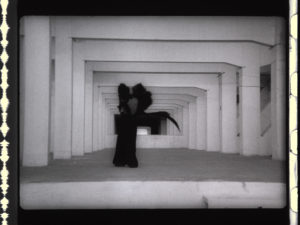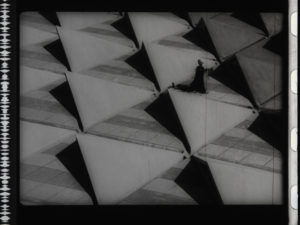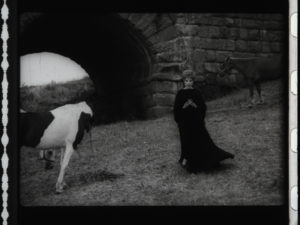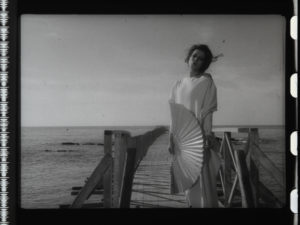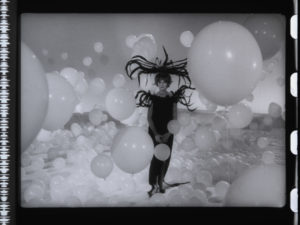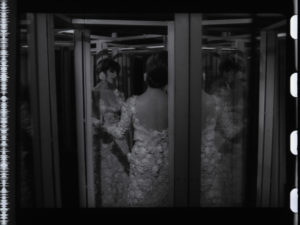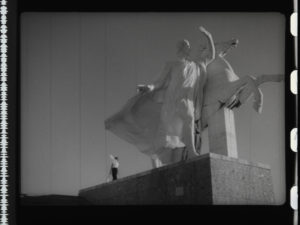Mina, Fellini and the Force of Destiny
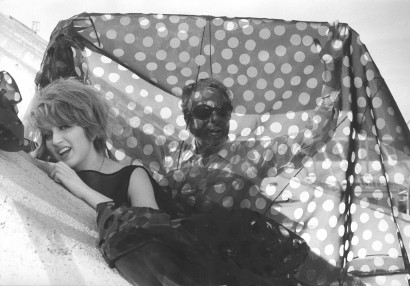
by Emmanuel Grossi
The second series of Barilla Carosello shorts of 1966 is an affair of missed encounters.
The Company had started to advertise again in the famous television program a year before, after a long absence from it (it was missing since the end of the 1950s, from the times of Giorgio Albertazzi and Dario Fo). This was a comeback in great style, and the prestigious CPV agency officiated it: Mina was engaged for it, as she was at the peak of fame and success, and Valerio Zurlini, one of the most elegant film directors, was called to stand behind the movie camera. A transitional series followed, most likely entrusted to Antonello Falqui who was directing Mina in television variety shows (those were the years of the glorious “Studio Uno” show). However, the Company was aiming even higher: it wanted Federico Fellini.
Only a few months earlier Juliet of the Spirits had been released in the cinemas and The Journey of G. Mastorna was in the making. In the mind of the Maestro, the protagonist should have been Marcello Mastroianni, supported by Mina. However, Fate mixed the cards on the table and gave life to a concatenation of events that caused an unforeseen outcome.
Mastroianni, as soon as Fellini called him, immediately cancelled his theater contract with Garinei and Giovannini that kept him engaged every night in the pharaonic musical Ciao, Rudy, inspired to the life of Rudolph Valentino.
Mina instead was unmovable: at the end of her period of involvement in “musicarello”* movies as a young singer, she considered her career as an actress as concluded. She made one exception to this shortly thereafter, as she was convinced to do so by her friend and movie director Duccio Tessari and his wife, actress Lorella De Luca, but it was only for a music cameo. Fellini continued to “court” her for years, and made another attempt even during a live connection from the filming set of Satyricon during the Canzonissima 1968 broadcast, but it was all in vain.
That’s right, because in the meantime the movie was postponed a number of times: setbacks, health problems, continuous changes of plot and cast… The affair dragged up until the ‘90s and the movie never started. But now we know for certain that at the origin of it all there was the fear of the specter of death that terrified a superstitious Federico, as this had been waved in front of him by the warning of his mentor, the seer Gustavo Rol: if he ever shot that movie (metaphorically, it narrated a journey to the Otherworld), he would die.
In the midst of this chaos, Barilla came onto the scene and offered the solution to crown the union between Mina and Fellini on a silver plate. However, the director was (still) a purist and shunned the enticement of advertising, against which years later he thundered with his famous phrase: “One cannot interrupt an emotion”. This, even though in the meantime he had surrendered to it and filmed commercials, including Rigatoni, with which he re-established relations with Pietro Barilla.
The game appeared to be irremediably lost when a trump card appeared: Pietro Gherardi, who at the time was Fellini’s trusted set and costume designer. He directed the most dreamlike and “cinematographic” series of Italian (and not only) advertisement ever, bringing to life the atmospheres of Mastorna through the places that should have been its highly evocative symbols: the Palazzo della Civiltà del Lavoro at EUR (Rome), the coastline of Circeo, the ancient Roman aqueduct of Serino, and evocative views of the train and subway stations of Naples…
*“Musicarello” – in the world of Italian cinema, these were movies that featured popular singers and their latest songs and were intended for a young audience. They were fashionable in the 1950s and ‘60s.

